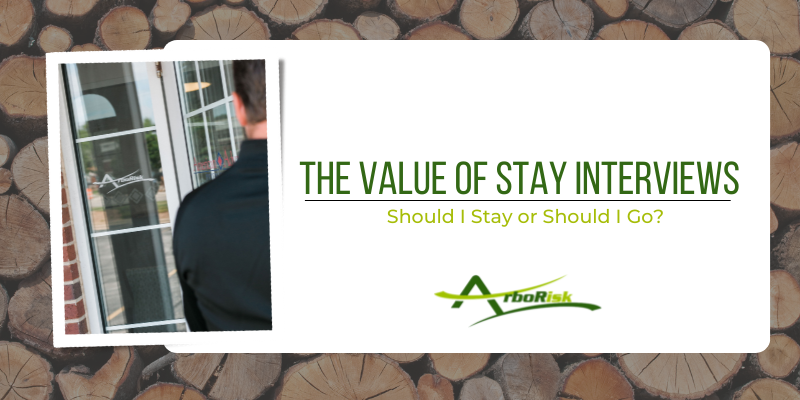Keeping Your Strategic Plan Alive
Keeping Your Strategic Plan Alive
Written by Kevin Martlage

Over the past year, ArboRisk Insurance has published numerous articles about how to strategically advance your company. Primarily we have focus on developing a strategy around supporting your team, your leaders, and the business culture necessary to successfully advance your tree care company. In an article ArboRisk published on October 28, 2021, “Why is Strategic Planning Important”, I wrote about the importance of developing a strategic plan that not only validates the “why” of your organization, but also the steps you can take to achieve the “why” and your goals.
An impactful strategic plan is one that helps to ensure your current path is sustainable, profitable, and most importantly helps you achieve all that you can as a company. When developing a strategic plan, you must ensure you have clear goals in place for the next 1-3 years as you continue to build your company and your team? If not, you will certainly end up somewhere in the future, but is that where you want to be and have you achieved all you can achieve as an organization?
Before we talk about how to keep your strategic plan alive and relevant, I’d like to recap the process we recommend following as you develop a strategic plan. When leading organizations through the strategic planning process there is typically focus on five key areas:
- Confirming the “Why”
- Reviewing performance and current state
- Identifying what is possible and where we want to go
- Determining how we will get there
- Implementation and monitoring
The outcome of the strategic planning process is several short term and long-term goals that will help the organization achieve the overall mission, or “why,” of their organization. Additionally, you then must develop an operational plan and budget that supports the goals that have been identified. This is done in numerous ways, but usually by focusing on the following key questions that will help you dive into your company to see what is needed to achieve each goal:
- What resources are necessary, and do we currently have those resources?
- Do we currently have the staff needed to make these goals happen?
- What are some potential roadblocks that we need to proactively identify?
- What are some other outside resources and knowledge that we may need to engage?
Whether you go through the strategic planning process internally as a team or have someone help facilitate the development, every organization is then left with the question of “now what”? As an organization you have spent time developing this iron-clad strategic and operational plan that will take you to the next level, but other things always seem to get in the way of making it happen. Those things are what I like to call unintentional noise which always seems to interfere with the implementation and effectiveness of the plan you just spent time creating. So how do we eliminate the unintentional noise and effectively implement and carry out your plan?
A Harvard Business Review article, “4 Common Reasons Strategies Fail” published June 24, 2022 outlines some reasons why strategic plans fail. Specifically, it notes:
“…60-90% of strategic plans never fully launch. The causes of derailment vary widely, but execution consistently bears the blame.”
I cannot tell you how many organizations I have worked with, and have worked for, where the strategy was not understood, and therefore never fully executed across all levels of the organization. In some instances, the developed strategy and operational plan is not even understood among the leadership team that developed the strategy in the first place. All too many times a strategy is developed, and the plan gets put on-the-shelf to be dusted off 3 years later or when it is determined that the organization is not heading in the right direction. When it is finally dusted off, it is realized that the answers were right there all the time. If the plan would have been followed the organization would be closer to where they now think they should be than where they are. This may sound extreme, but it happens all the time and creates lost time, extra expense, negativity towards the business culture, and a negative impact on your ability to serve your customers. So how as an organization do you ensure execution and delivery of the strategy that you and your leadership team so carefully developed? The answer starts with communication and understanding.
Every company has their own resources, budget, team and “why,” however how they keep their strategy and operational plan alive can be the same regardless of the size and direction of your organization. Here are a few steps I recommend you consider for implementation to ensure you keep your plan alive once developed:
- Communicate your plan to the entire organization and ensure their understanding
- Determine operational champions/leads for each functional goal to assist with oversight
- Develop, communicate, and review key performance indicators (KPIs) for each goal
- Review expectations and confirm understanding of key deliverables
- Integrate KPI monitoring, updates, and performance review into all staff meetings
- Align meeting agendas to include strategic plan performance and general updates
- Align impact areas and KPIs to each specific job or functional position within the organization
- Integrate strategic categories and updates into your annual review process
- Review the validity of your plan annually and adjust as necessary ensuring changes are communicated and understood
The more you can integrate some of these items into your standard operating procedures, the more effective they will become in helping to keep your plan alive. Integration of some of these items can be easy depending on your company. For instance, can you create a standard meeting agenda template that always includes a strategic plan performance and impact update? Depending on your IT capabilities, can you create a KPI dashboard that is updated in real time and aligned with the strategic categories and goals of the organization. How about a weekly or monthly, CEO/Owner newsletter, webinar, or lunch and learn focused on strategic plan performance and updates.
How you approach keeping your plan alive is up to you and your company leadership. However, the most important thing is that you implement the plan and then keep it alive through consistent and intentional communication and follow up. Ensuring that a solid strategic and operational plan is kept alive will help your organization continue to have the support and ability to achieve your goals. Communication is key in this phase of implementation and monitoring. The entire team must be aware of the plan that was created to ensure that everyone is driving to the same place on the map and understand where they are on that map. It is up to the leadership of the organization to ensure that a clear understanding of the plan is in place and that everyone on the team is aware of how they impact the plan daily, weekly, monthly, and annually.
If you are interested in learning more about how strategic planning can enhance your organization,I encourage you to look at our Thrive Risk Management Strategic Planning package. In just four short weeks we can help you identify who you are as a company, what you want to become, and what strategic milestones will be needed to achieve your goals and ensure your team is all driving to the same destination.








Recent Comments